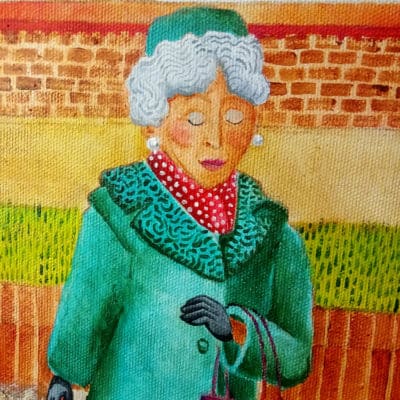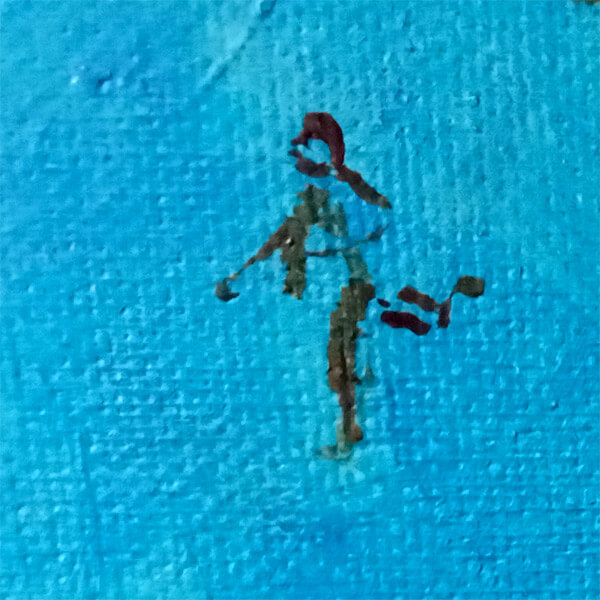This piece of naïve art, set in Edgware in about 1975, was originally described in an earlier post here. This painting was for me an exercise in nostalgia, recreating a place so familiar to me during my childhood. Apart from the Shabbat atmosphere, with its family meals and my Grandma’s special cooking, one of the main elements of my memories are of the unique physical textures of the house: The rough pebble-dash wall surfaces, the smooth rounded stones embedded in the concrete of the driveway, the unusually rough zig-zag pattern within the bricks, the strange, rough-smooth, black-purple stones in the garden wall, and the black curly ironwork of the garden gate. In this artwork I used a sand-texture paste to try and recreate the feel of some of these. When I touch the picture, I can feel that place and time in an immediate and tactile way.
One of my favourite naïve art practitioners is John Allin, who used to paint detailed scenes of life in the East End. You can read a bit about him, and see some of his wonderful naïve art, here.
This painting is available as a canvas print here.
העבודה מגלמת את החיים באיזור הפרברי של לונדון, איפה שגדלתי. תהליך היצירה הייתה בשבילי סיור בזמן, שיחזור של מקום קרוב לליבי. מלבד אווירת השבת או יום טוב, עם הארוחות המשפחתיות והבישול המיוחד של סבתא שלי, אחד המרכיבים החשובים עבורי זה מגוון הטקסטורות בסצנה: הקירות המחוספסים, האבנים המעוגלות בבטון ברצפה, האבנים המוזרות, מחוספסות-חלקות בחומת הגינה, והברזל השחור והמתולתל של השער. בציור הזה השתמשתי במשחה חולית כדי לשחזר את הטקסטורות האלו. כשאני נוגע בתמונה, אני מרגיש ממש באצבעותיי את המקום ואת התקופה באופן ישיר ומרגש
Naïve art is the perfect expression for community life.
Because of its roots as vernacular art expression – untutored and outside of the art establishment – naïve art has traditionally been associated with rural village life (as in Ethiopian traditional art) and more recently, urban and suburban life too (as in the art of John Allin and others). I was originally captivated by this genre when I came across the unique and enchanting GINA gallery in Tel Aviv. GINA gallery has a wonderful inventory of naïve art. Artists such as Louis Ferreira de Moraes paint colourful and detailed scenes of village life in the jungle regions of Brazil, while it was at GINA that I discovered the work of Michael Falk, who documented his childhood in Germany, his life on the Kibbutz in Israel, as well as Biblical scenes. GINA gallery has a video introduction to naive art here.
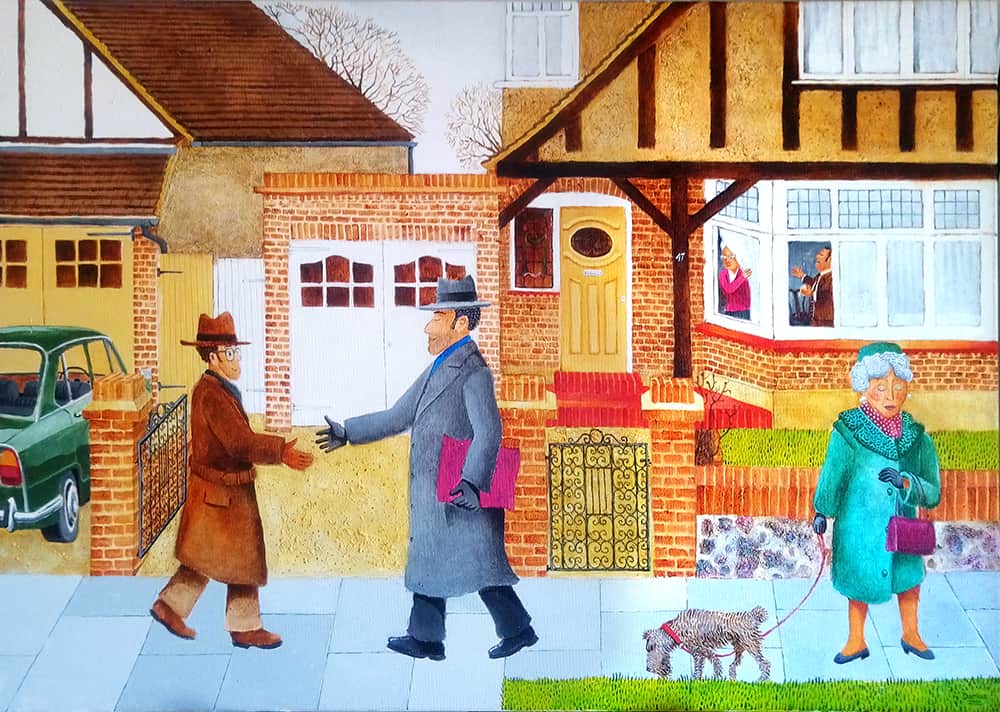
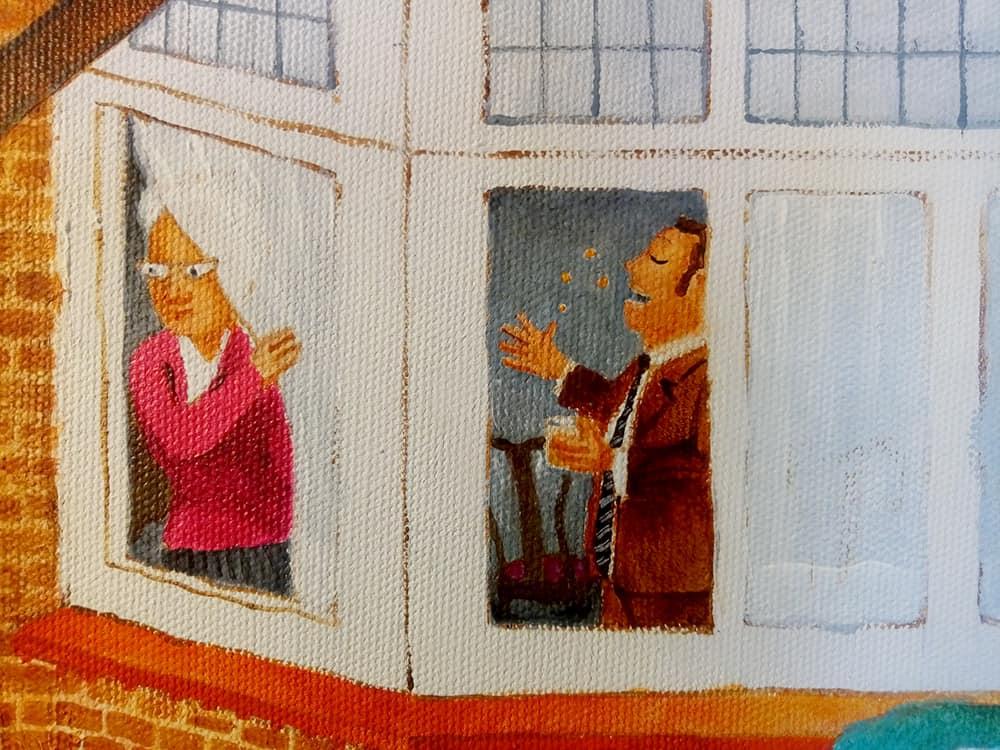
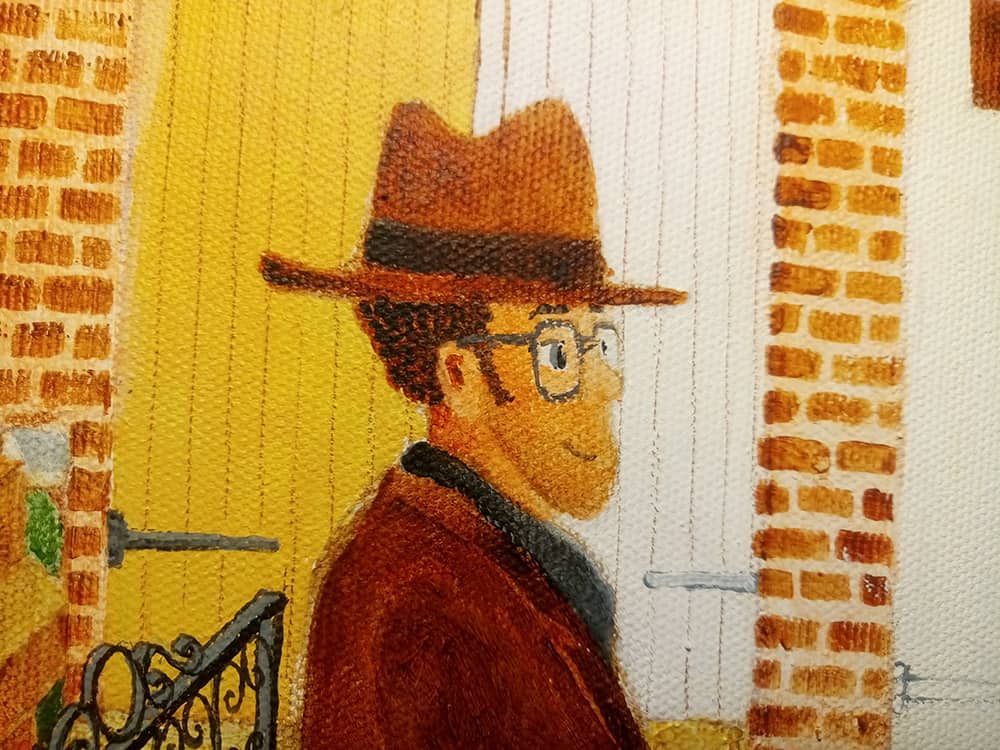
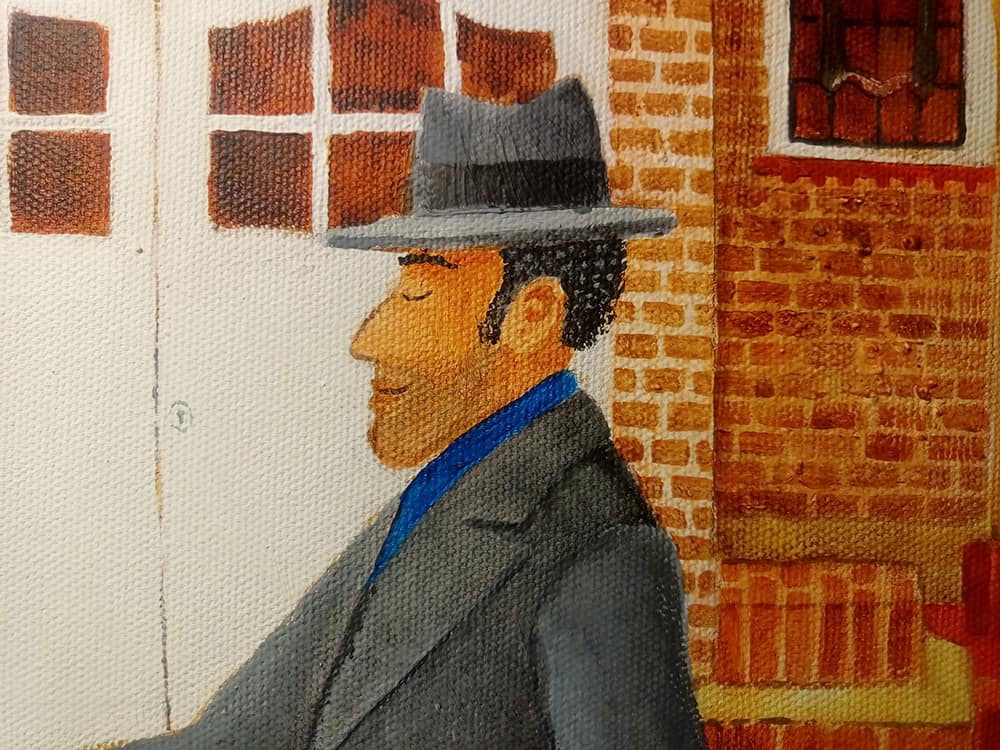
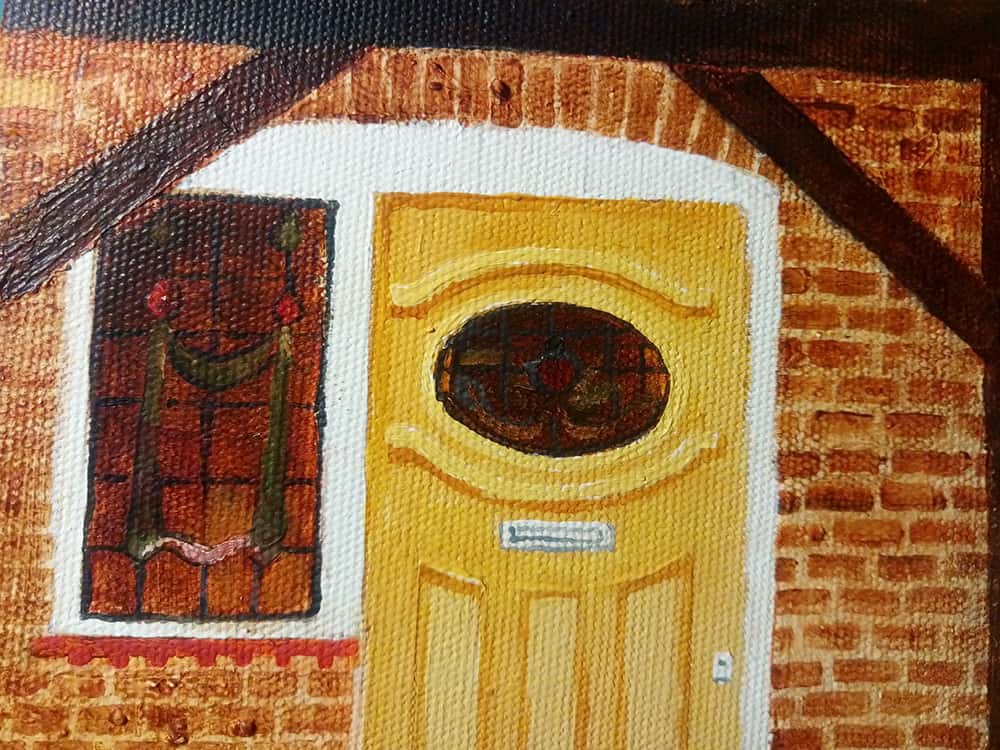
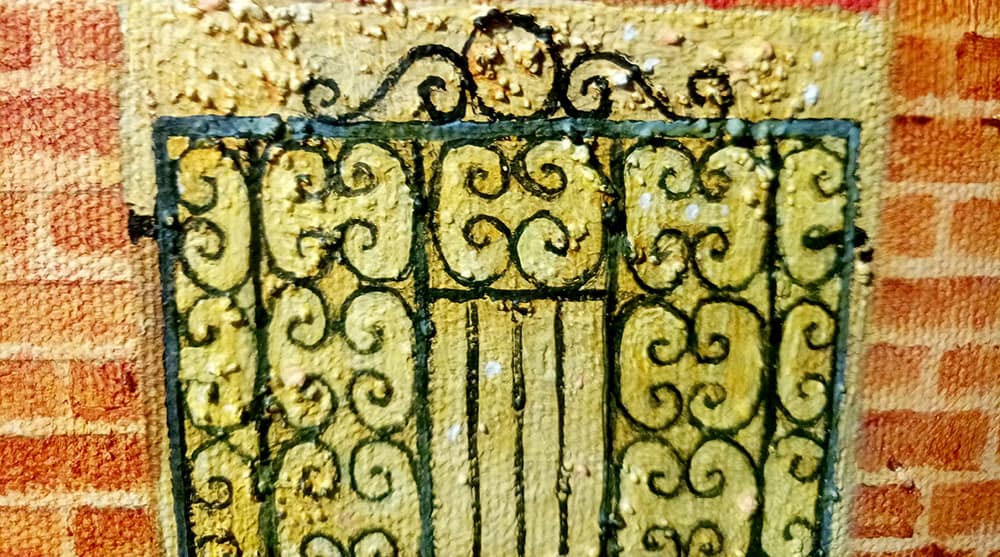
The House Today
Subsequent owners have significantly remodeled this house, in the years since since my Grandma lived there. A lot of the details which gave it its special period character have gone. And of course, the front garden and drive are now a large area of block paving, with green wheelie bins as residents.

